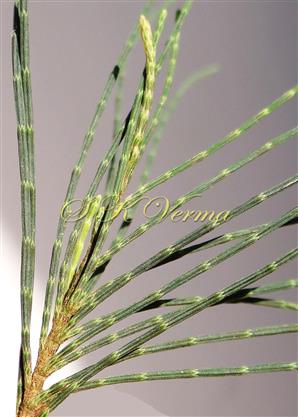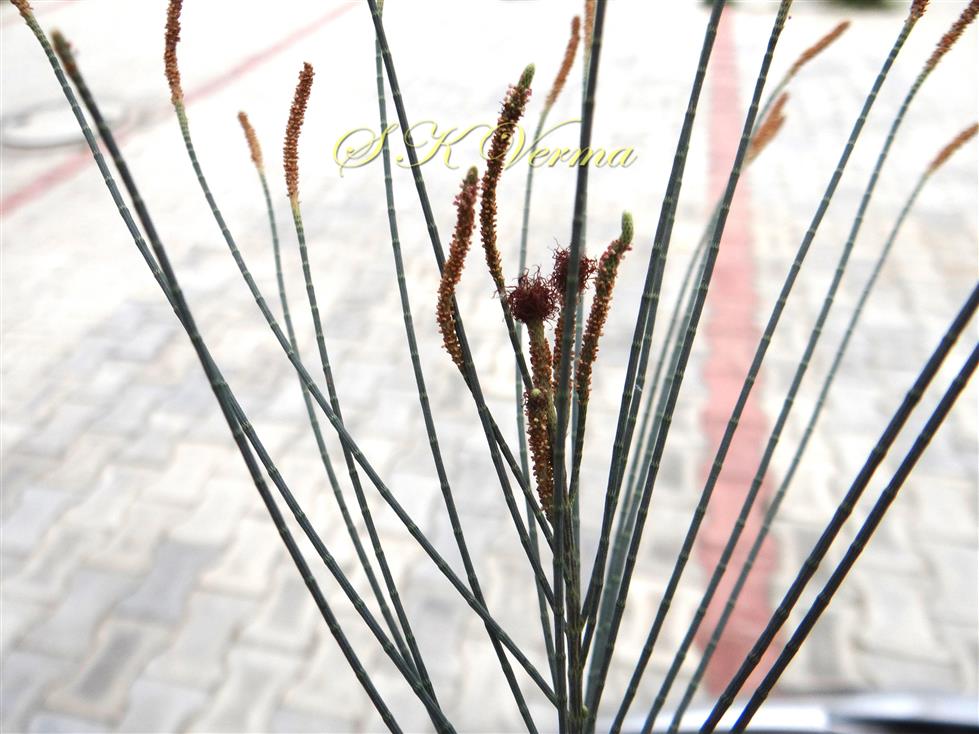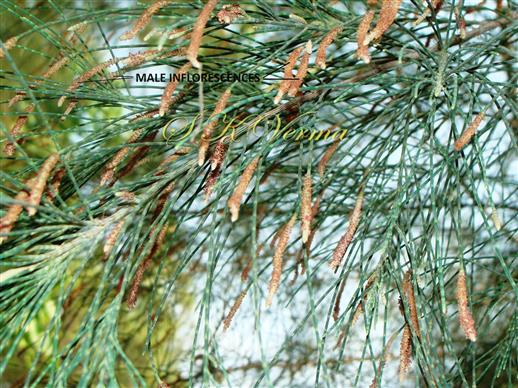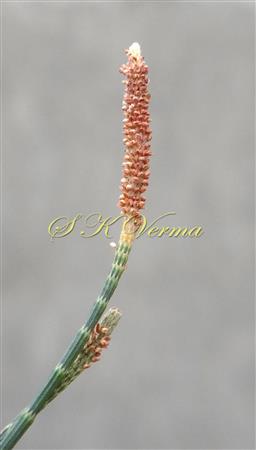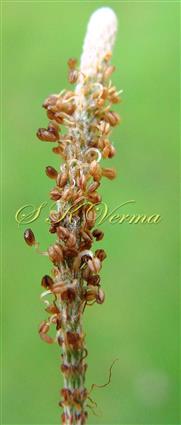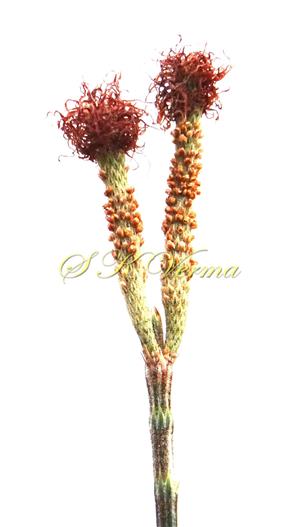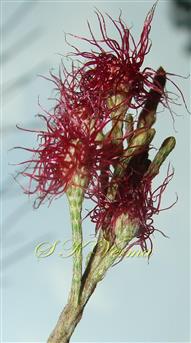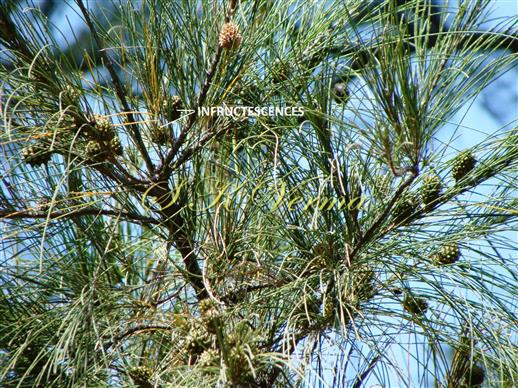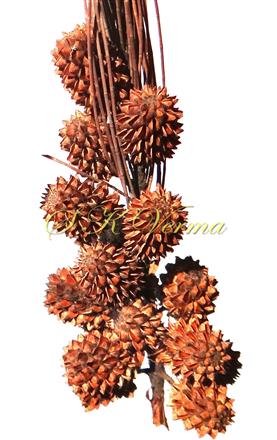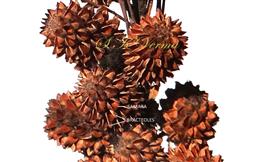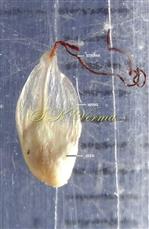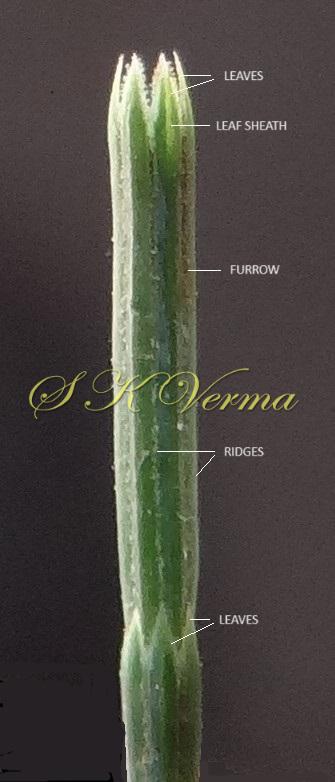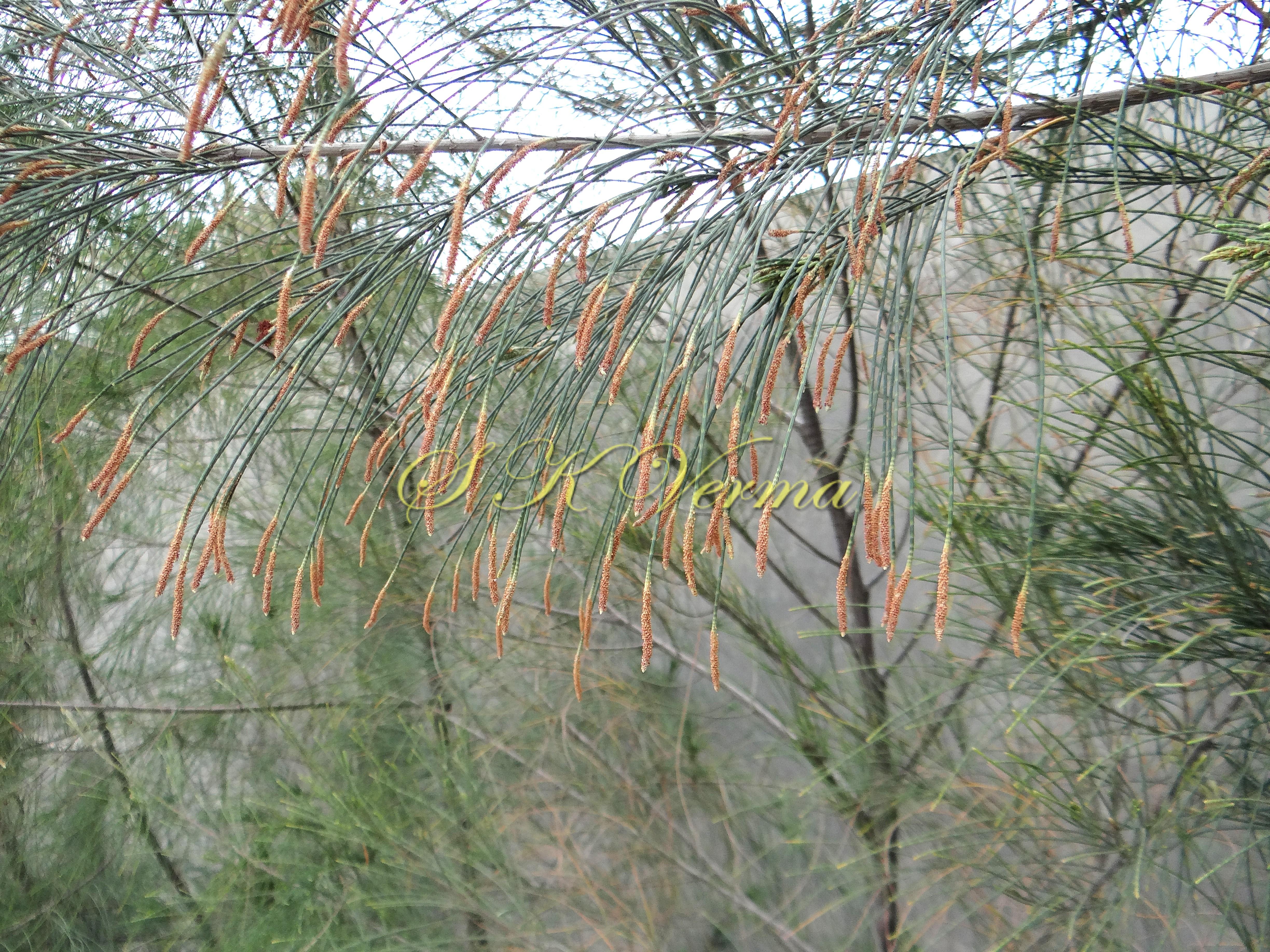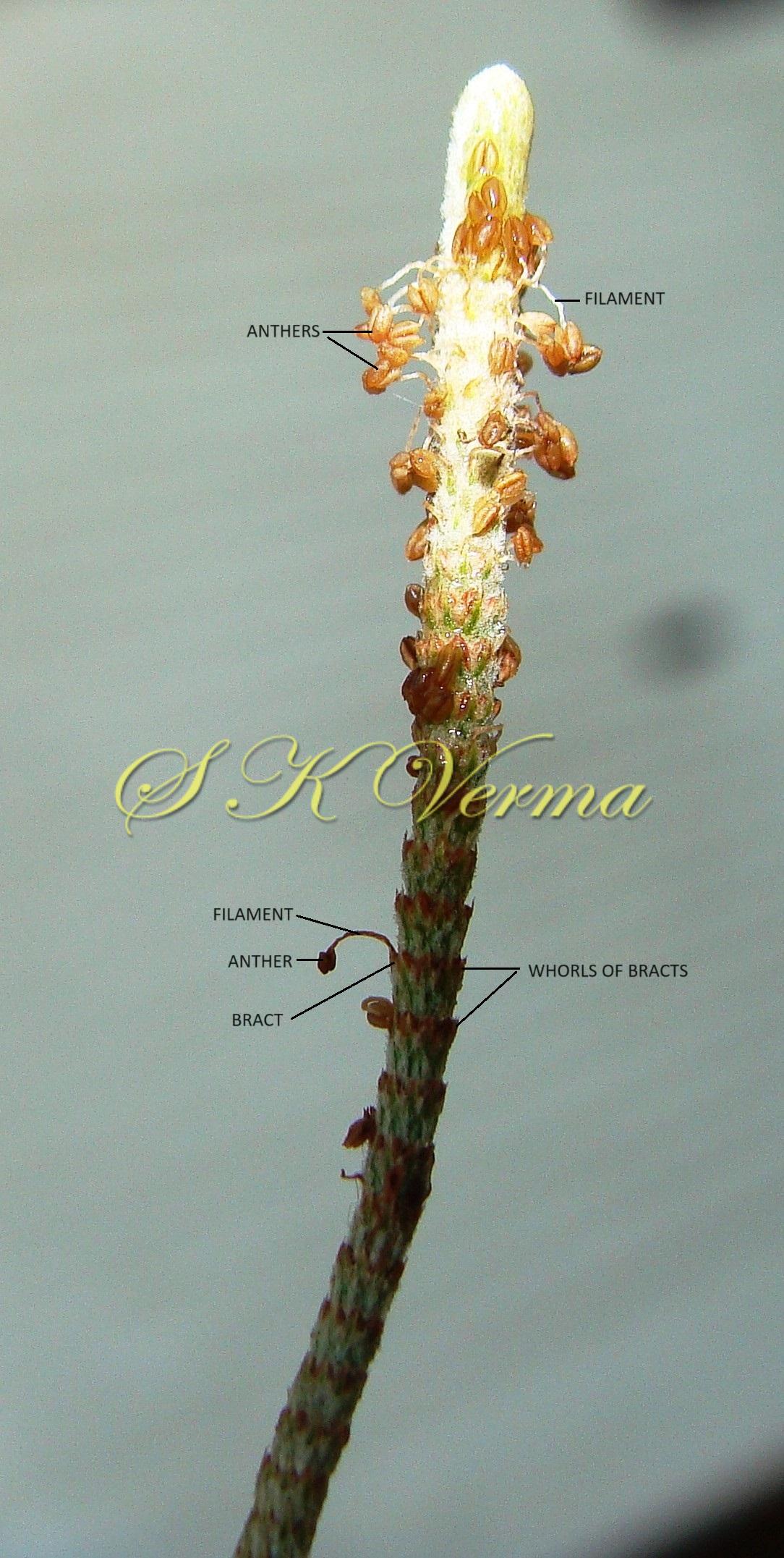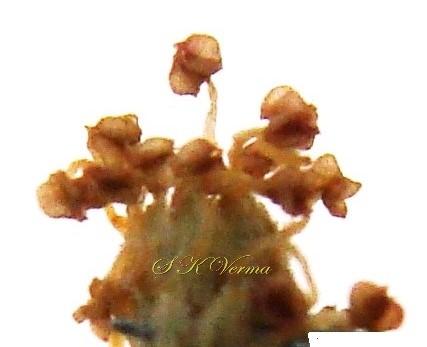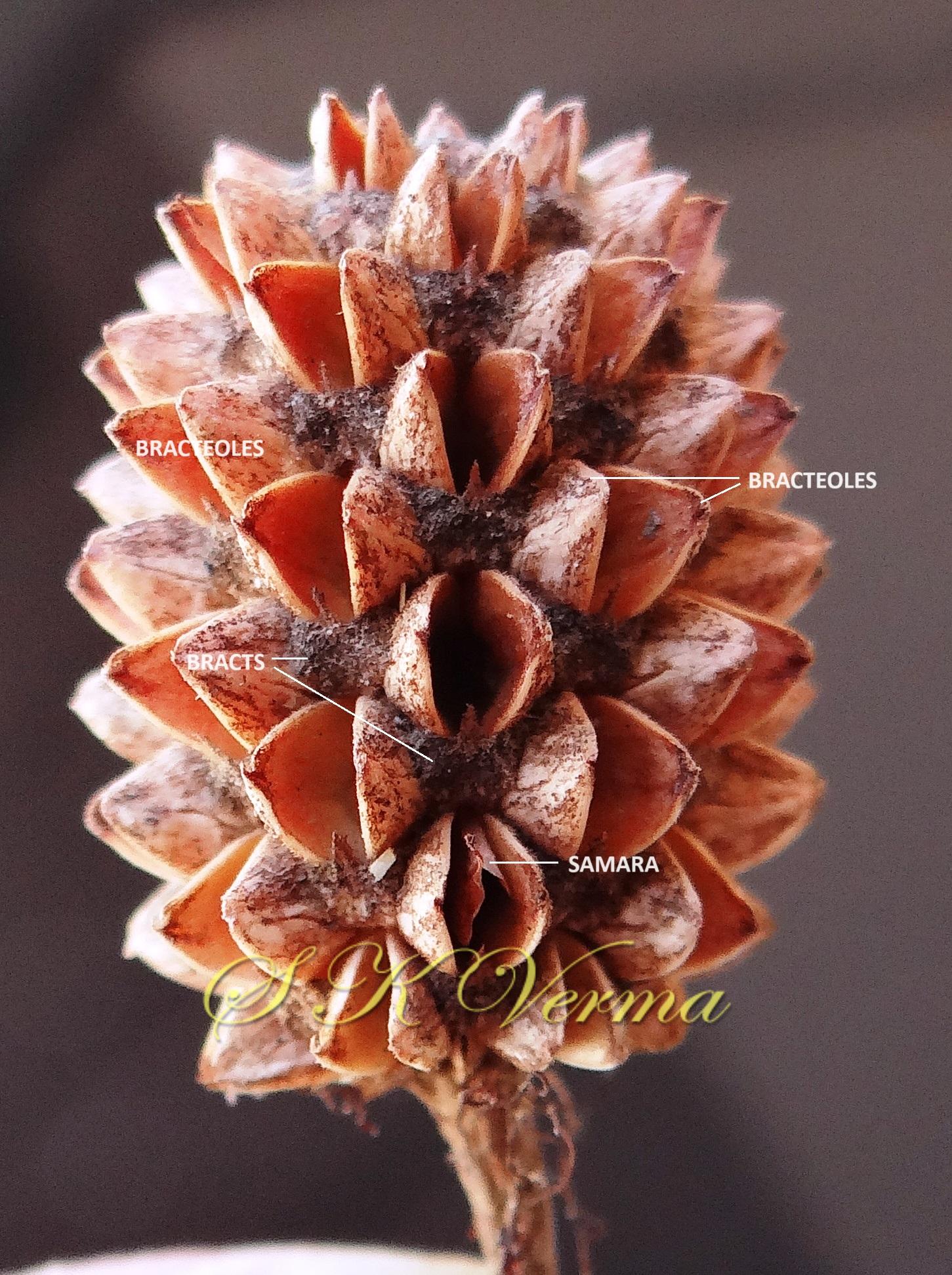CASUARINA
Casuarina
L., Amoen. Acad. 4: 143. 1759; Adans., Fam. Pl. 2: 481. 1763; Parker, For. Fl. Punj., ed. 1: 489. 1918 (Reprint 1973); Fl. China @ eFloras.org 4:106; Fl. North Amer. @ eFloras.org vol. 3; Dawar, Fl. Pak. @ eFloras.org p. 1.
Leafless trees or shrubs. Branchlets cylindric, jointed, grooved, grooves deep and narrow concealing stomata; internodes terminating in a short sheath of 6-many connate scale-like triangular leaves. Flowers unisexual, monoecious or dioecious. Male flowers in terminal spikes formed of superposed shortly-toothed cups (whorls of bracts). Male flowers: Bracteoles 2, lateral, persistent. 2-bracteolate. Perianth 2, hood-like, caducous at base when stamen expands. Stamen solitary; filament inflexed in bud; anther large, bithecous. Female flowers in ovoid or globose heads, bracteate, 2-bracteolate; each pair of bracteoles enclose one female flower. Female flowers: Perianth absent. Carpels 2, syncarpous; ovary 1-locular, ovule 1-2, ascending; style 1; stigmas 2, filiform. Fruits (samaras) aggregated in cone-like structure with persistent bracts and bracteoles.
14 species
Casuarina equisetifolia
Casuarina equisetifolia
L., Amoen. Acad. 4: 143. 1759; DC., Prodr. 16: 338.1868; Hook. f., Fl. Brit. Ind. 5: 598. 1888; Parker, For. Fl. Punj., ed. 1: 489. 1918 (Reprint 1973); Fl. China @ eFloras.org 4: 106; keralaplants.in
Trees, conifer-like appearance, evergreen, 10-30 m tall. Stem woody, branched; bark greyish-brown or dark brown. Ultimate branchlets usually pendulous, greyish-green, 10-26 cm x 0.5-1 mm, jointed; internodes 6-9 mm long with 6-8 prominent ridges; furrows between ridges narrow and deep; nodal leaf sheaths with 6-8 teeth, pale green, united at base into a short tip; teeth 0.5-1 mm x 0.3-0.5 mm, triangular, scaly; teeth correspond to ridges of lower internode and furrows of upper internode. Flowers unisexual, monoecious. Male inflorescences spikes, pendulous, catkin-like, terminal on lateral branches, 1-4 cm long, 2-4 mm in diameter, bracts arranged in 10-25 whorls, each whorl with 6-7 bracts and each bract with one axillary male flower; bracteoles membranous, ovate, acute, 0.5-1 mm x 0.2 mm. Male Flowers: Tepals 2, membranous, ca. 0.7 mm x 0.5 mm, hooded. Stamen 1; filament exserted, 2-2.5 mm long; anthers ovoid, apiculate, bithecous, 1-1.5 mm long, reddish brown, basifixed, longitudinally dehiscent. Female inflorescences head-like, ovoid to subglobose, 4-8 mm long, terminal on short lateral branches scattered or clustered, subsessile and axillary. Bracts whorled, each having a sessile flower and each flower subtended by a pair of bracteoles; bracts +/- similar to those of male inflorescence. Female Flowers: Perianth 0. Pistil bicarpellary; ovary superior, ca. 1 mm long, ovoid, unilocular with 1-2 parietal-basal ovules; style short; stigmas 2, linear, reddish-purple, 5-8 mm long, exserted. Infructescences +/- woody, broadly resembling pine cones, globose-oblong, 1.5-2.5 cm x 1.2-1.5 cm, with 9-14 whorls of paired bracteoles enclosing fruits (samaras) inside, 7-8 paired bracteoles per whorl, alternating with bracteoles located in the next whorl, bracteoles obovate-oblanceolate, acute, protruding from infructescence surface, persistent; infructescence persists very long on the plant even after dehiscence. Samaras 4-8 mm long, pale grey or yellow brown with minutely raised wavy lines along the surface, dull, glabrous. Seed 1, exalbuminous.
Common Names: Whistling Pine, Casuarina, Horsetail Tree, Mile Tree, Common Ironwood, Beefwood, Bull-Oak; Jungli Saru (Hindi)
